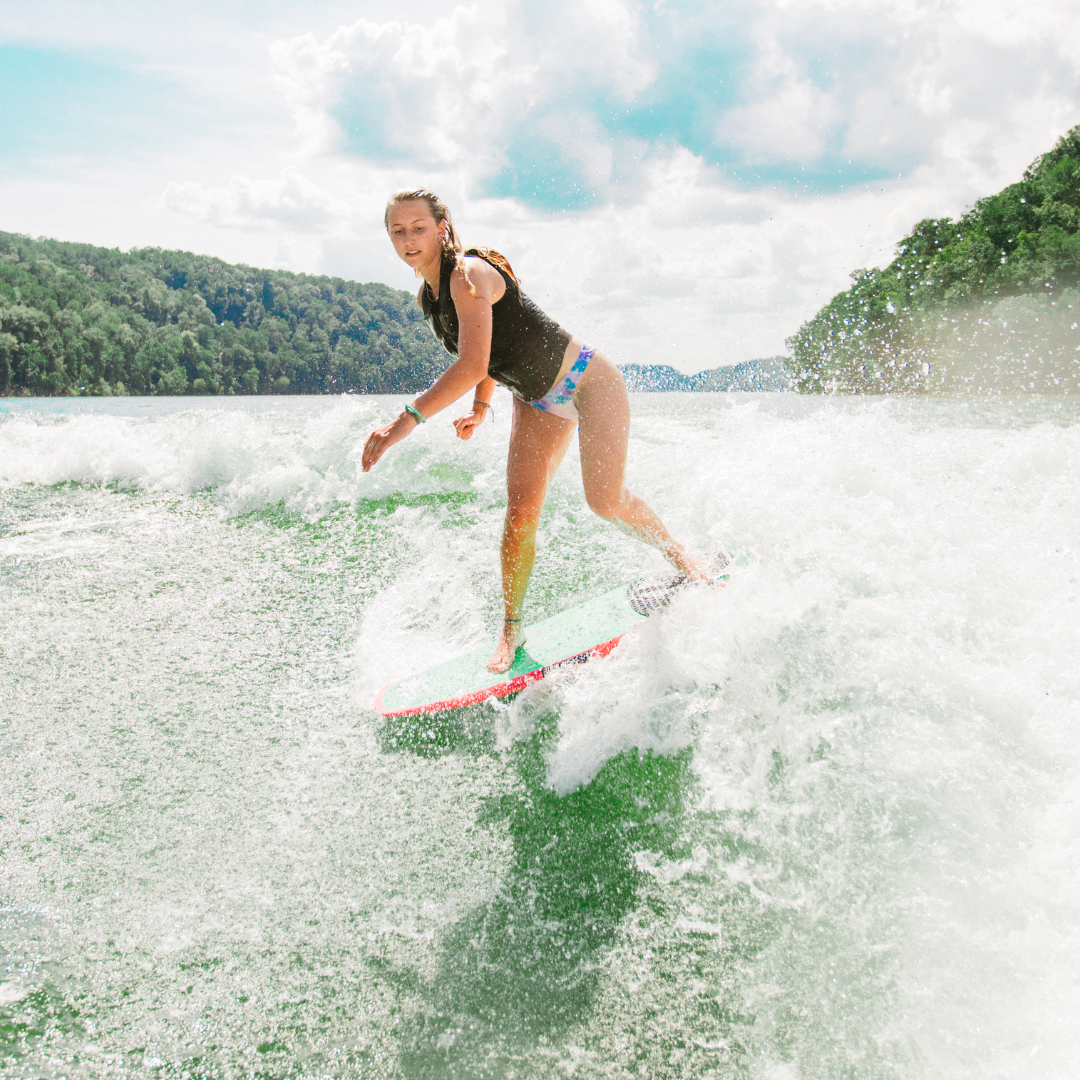
Wakesurfing: The State Of The Sport
Share
We’ve been getting into the weeds a bit on the physics and engineering principles behind wakesurf boards, so I wanted to take a step back and talk a bit about the state of the sport as a whole.
A Brief History: From the Ocean to the Lakes
Surfing itself goes back thousands of years in Polynesia, but it started to become the modern sport we all know in early 20th-century Hawaii. Now it’s an Olympic sport practiced all over the world, from the California coast to the big waves of Nazarre in Portugal. The history of wakesurfing is quite a bit shorter than that.
We can trace our roots back to the 50s and 60s when surfers started trying to ride the wakes of boats. This was in the days when waterskiing was king, so boats were designed to sit high and go fast. That meant the wakes were nothing like what we know today, so this idea didn’t really gain traction until the 80s and 90s when the early pioneers started shaping specialized boards designed to surf on the smaller waves of a boat wake. This changed in the early 2000’s when manufacturers like Malibu, MasterCraft and Nautique began to introduce wake-specific boats equipped with ballast systems designed to drop the boat deeper into the water so the propeller could push more water and make a bigger wave. The initial impetus for this innovation was wakeboarding, but the past 10 years has seen most boat manufacturers tailor their designs towards creating better wakes for wakesurfing.
If you’ve been out on any lake recently, you’ve probably noticed that you see less and less waterskiiers and wakeboarders, and more and more wakesurfers. While there’s not exact numbers for participation in any of these, participation for waterskiing and wakeboarding peaked from 2007-2010 and has been falling ever since as more and more people make the switch to wakesurfing.
The Current State
While wakesurfing’s been around in its current form for over a decade, it’s still in its infancy as a sport, somewhat akin to the early days of skateboarding when the pioneers are still pushing the boundaries and trying to figure out what’s possible. In general, there’s 3 main categories of tricks: Spins, Jumps, and Varials. That’s a bit misleading since many tricks mix these categories together, but in general, you can break down at least the parts of any trick into one of these three categories.
Spins are where the board rotates anywhere from 180 degrees all the way to full rotations. The 360 is perhaps the seminal trick that everyone first tries to master, but more experienced riders can push that to 540s, 720s and more. Jumping can be broken down into two types, ollies and airs. An ollie is a straight jump, usually in the base of the wave, whereas an air is an ollie off the wave with some degree of rotation of the board. Like the 360, jumping is usually something to master early on as it’s the basis for most of the more advanced tricks that require some space between your board and the water. The last main category is the Varial, which is when the rider rotates their body independently of the board. Think riding toeside, jumping off the board, then spinning and landing heelside. All while the board stays facing the same direction.
Spins, jumps and varials are the basics, but beyond that there’s a growing list of tricks that showcase the creativity and skill in this sport. From shuvits (shuvs), grabs, big spins, all the way to 5-shuvs, 1080s, and even kickflips. The sport is growing so riders continue to do more every year, and beyond the creativity of riders, innovations in board design and boat design are opening up the space to more of what could be possible.
The State of the Sport: Competitions and the Community
As more and more people are introduced to wakesurfing, what began as a crazy attempt to move surfing from the salt water to fresh water has evolved into a structured sport with professional riders, organized competitions and dedicated associations focused on promoting it. At the moment, there’s no single "NBA" of wakesurfing, but the World Wakesurfing Championship, Competitive Wake Surf Association events and many local and regional events bring together the top riders on the water. Competitions usually have divisions mashed on age, gender, and skill level and are judged on factors such as difficulty of tricks, execution, style, amplitude, and variety among other things.
Even beyond competitions and professionals, the sport of wakesurfing is rapidly growing from a niche activity to a mainstream watersport. Boat manufacturers are increasingly tailoring innovation away from waterskiing and wakeboarding towards wakesurfing. The introduction of surf gates in the past decade gave us bigger waves than ever before and as a result, more and more people are getting out on the water. Social media platforms like Instagram and Youtube are introducing more and more people to the boat lifestyle and the sport of wakesurfing.
As a whole, wakesurfing seems to be at a tipping point in its history. Waves are only getting bigger, boards only getting better, and interest only going up. The expansion of competitions, innovations in equipment, and global adoption are reminiscent of skateboardings popularity in the 90s, albeit with a bit nicer of toys needed to get into it. And as wakesurfing rides this wave of growth, it’s clear that the best is yet to come—pushing the limits of what’s possible, both on the water and in the sport’s future.
